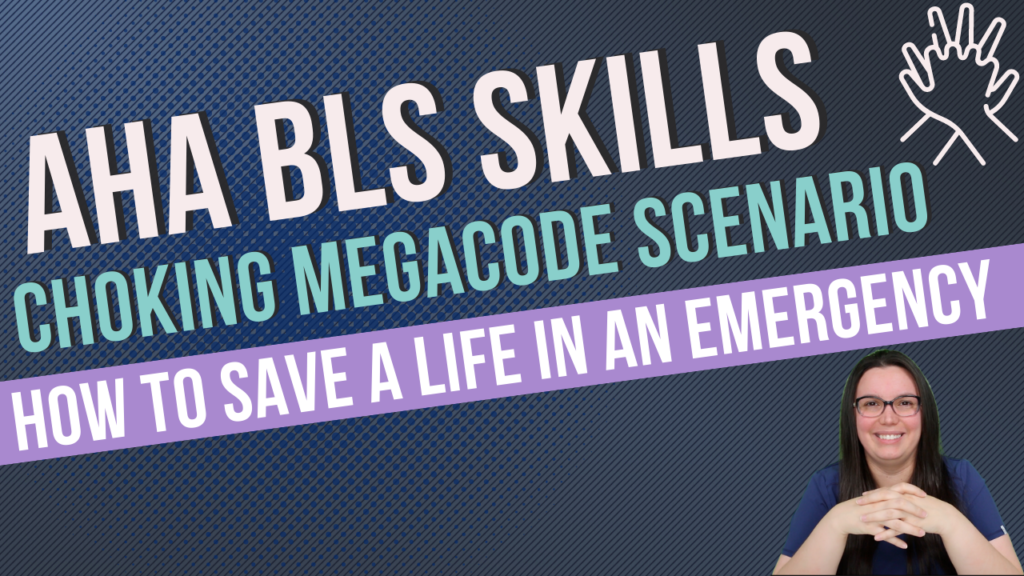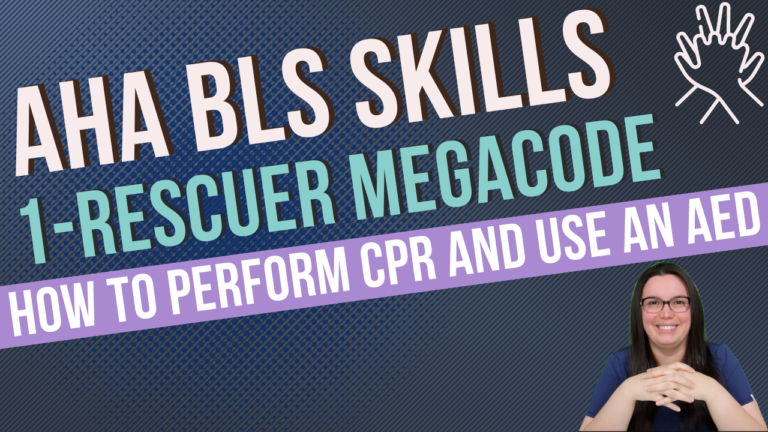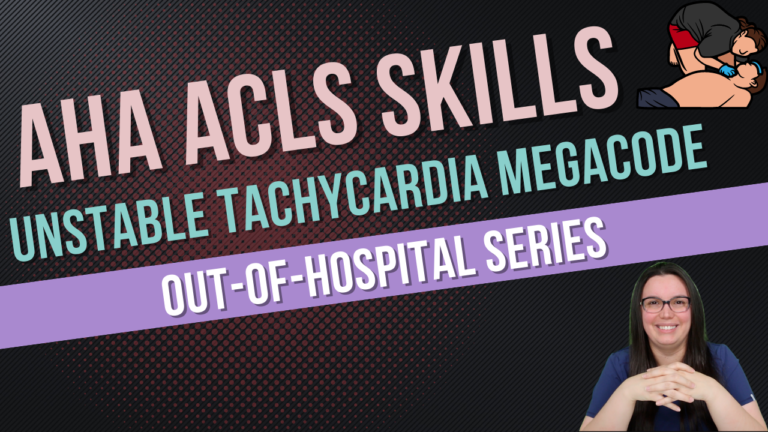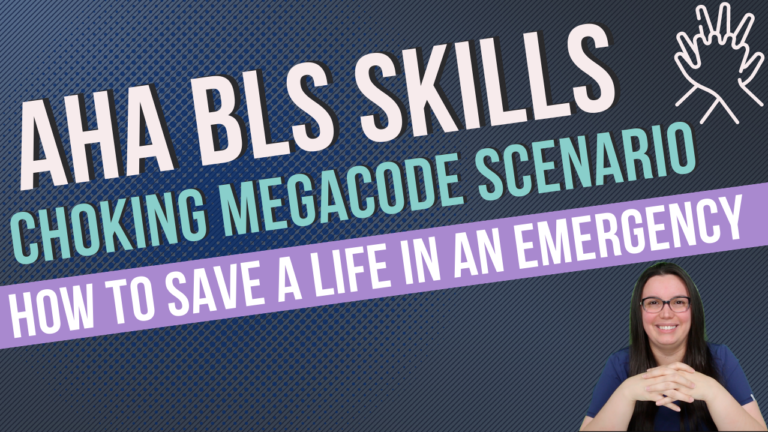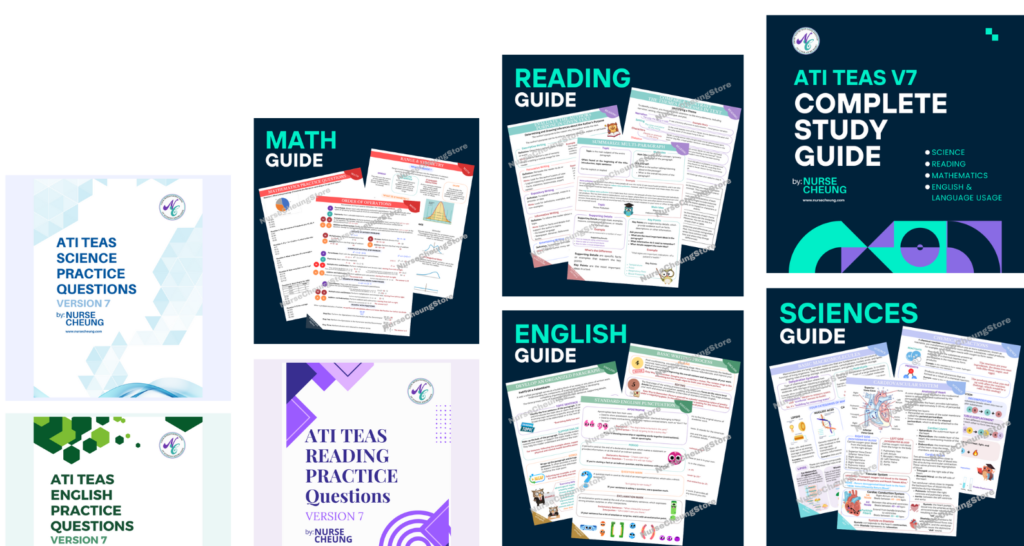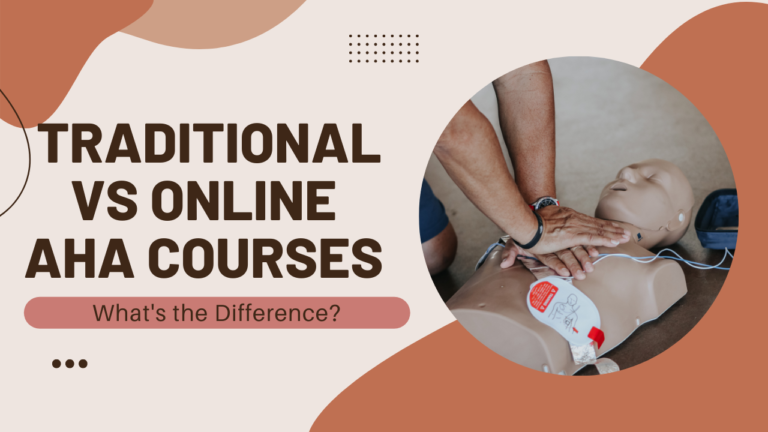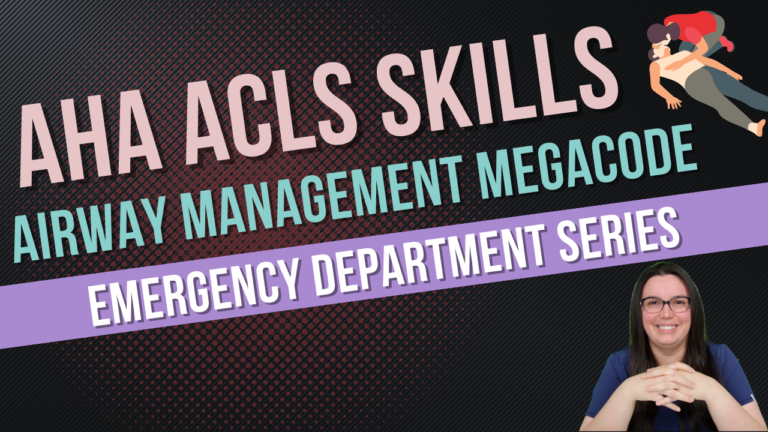When someone is choking, time is of the essence. In just a few short minutes, they could lose consciousness and die.
That’s why it’s important to know how to perform the AHA BLS Choking Megacode. This emergency procedure can help save a life in an instant.
In this blog post, we will teach you how to do the megacode, as well as provide some tips on how to avoid choking in the first place!
Difference between Mild and Severe Airway Block
Mild Airway Block: Person can talk, make sounds, and cough loudly
Severe Airway Block: Person cannot breathe, talk, make sounds, has a cough that has no sound, makes the choking sign
Universal Sign of Choking: holding the neck with one or both hands
Choking Adult Megacode Scenario
The following is a scenario in which you would use the Chocking Adult BLS Megacode:
You are out to eat with your family when a person at the table next to you begins exhibiting signs of choking. This person is coughing with no sounds and is making the choking sign.
Demonstrate what you would do next
- Ask the person “Are you choking?” If the person nods “yes” and cannot talk, severe airway obstruction is present.
- Ask the person if they would like help. If they nod “yes,” help the person with the AHA protocol. If they nod “no,” then you must respect their wishes.
- Stand behind the person, wrap your arms around their waist slightly above the belly button and make a fist, place your knee between their legs, and provide five abdominal thrusts. If the person is large, pregnant, or in a wheelchair, place your fist on the lower half of the breastbone for chest thrusts.
- Call 911 if the object does not dislodge after five abdominal thrusts or chest thrusts.
The person becomes unresponsive. What are your next actions?
- Activate the emergency response system through your mobile phone or send someone for help.
- Begin CPR starting with compressions. Important Note: If the person originally said no to help when they were conscious when the person falls unconscious consent is implied at this point and you should begin CPR.
- Turn the person towards yourself. If you see the object, remove it if possible. If you cannot see the object, do not attempt to remove the object. Never perform a blind finger sweep as you can further lodge the object in the airway.
- If unsuccessful, continue with CPR until there is a return of breathing and pulse.
It’s important to note that when the object becomes dislodged and breathing returns, the person may vomit which is why it’s important to have the person on their side.
Choking Infant Megacode Scenario
The following is a scenario in which you would use the Chocking Infant BLS Megacode:
You are feeding your infant when they stop accepting food and begin exhibiting signs of choking. The infant is making no sound and becomes anxious.
Demonstrate what you would do next
- Kneel or sit with the infant on your lap
- Remove clothing from the infant’s chest if possible
- Hold the infant facedown with the head slightly lower than the chest, resting the infant on your forearm. It is important to support the infant’s head and jaw with your hand. Avoid compressing the soft tissue in the infant’s throat.
- Deliver up to 5 back slaps forcefully between the infant’s shoulder blades. Deliver each slap with enough force to dislodge the object.
- Next, place your free hand on the infant’s back supporting the back of the infant’s head with the palm of your hand. Turn the infant over while carefully supporting the head and neck keeping the head lower than the body.
- Provide 5 downward chest thrusts in the middle of the chest over the lower half of the breastbone. Each thrust should be delivered over about 1 second.
- Repeat the sequence until the object is removed or the infant becomes unresponsive.
The infant becomes unresponsive. What are your next actions?
- Activate the emergency response system through your mobile phone or send someone for help.
- Begin CPR starting with compressions.
- Turn the infant towards yourself. If you see the object, remove it if possible. If you cannot see the object, do not attempt to remove the object. Never perform a blind finger sweep as you can further lodge the object in the airway.
- If unsuccessful, continue with CPR until there is a return of breathing and pulse.
It’s important to note that when the object becomes dislodged and breathing returns, the infant may vomit which is why it’s important to have the person on their side.
Your scenario has concluded.


